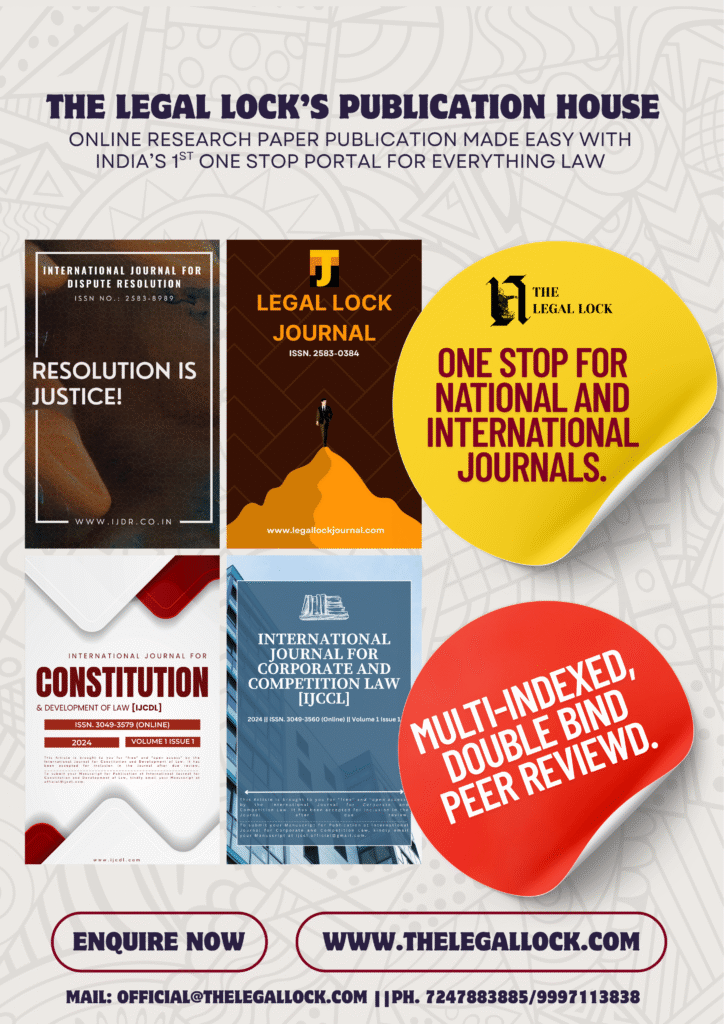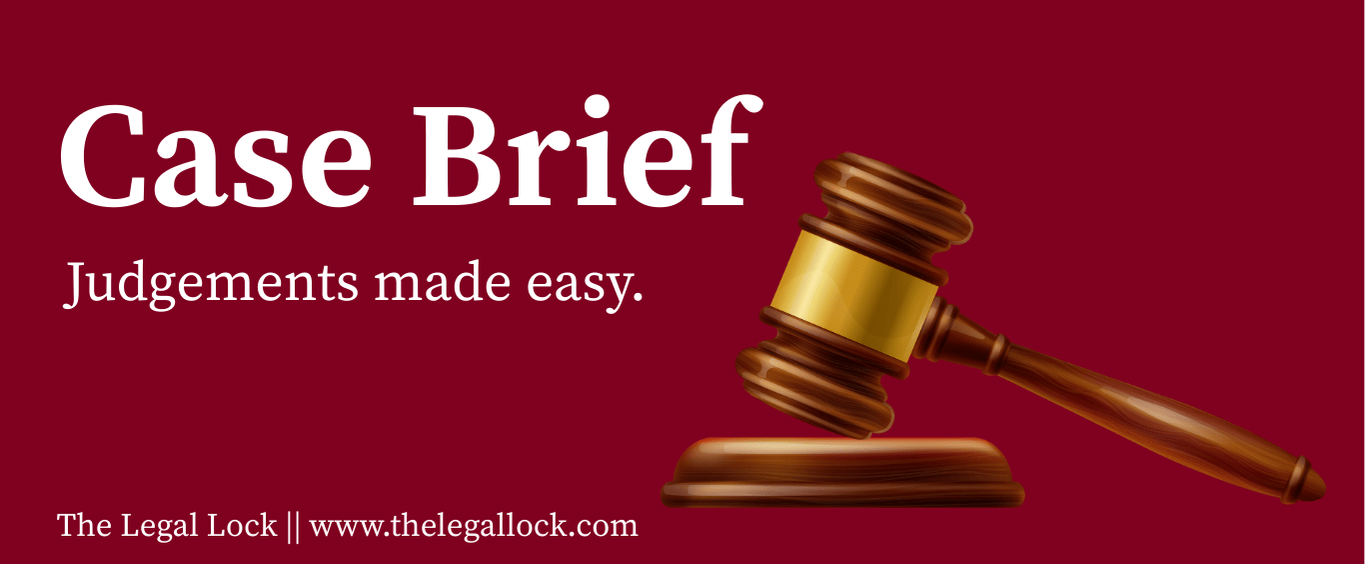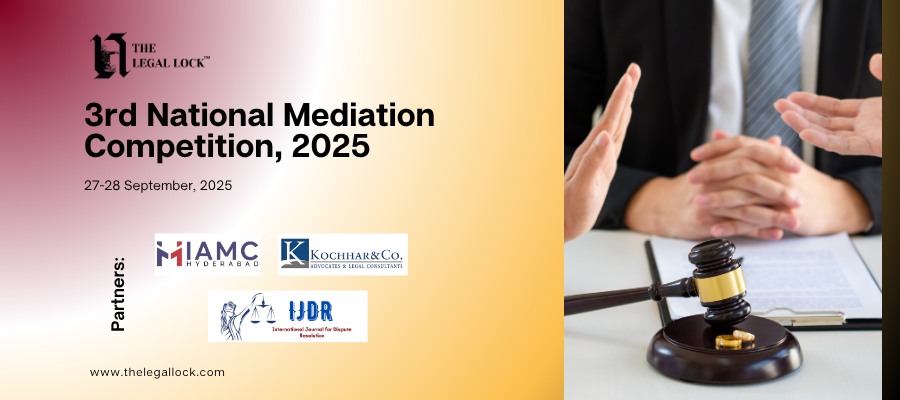| Case Name | L. Chandra Kumar v. Union of India |
| Citation | AIR 1997 SC 1125 |
| Court | The Supreme Court of India |
| Bench | (CJI) A.M. Ahmadi, (J) M.M. Punchhi, (J) K. Ramaswamy, (J) S.P. Bharucha, (J) S. Saghir Ahmad, (J) K. Venkataswamy, (J) K.T. Thomas |
| Decided On | March 3, 1997 |
| Appellant | L. Chandra Kumar |
| Respondent | Union of India |
Introduction
The Law Commission in 1975, the Administrative Reform Commission in 1969, the Swaran Singh Committee in 1975, and the Supreme Court in the case of K.K. Dutta v. Union of India AIR 1980 SC 2056 suggested the creation of tribunals made up of judicial and administrative members to decide service related matters in order to lessen the burden of service litigation from the High Courts and consequently the Supreme Court, which constituted a significant portion of pending litigation.
In response to this situation, Parliament passed the 42nd Amendment to the Consideration, which introduced Part XIV-A and included Articles 323A and 323B, which established tribunals to handle a variety of issues, including administrative difficulties.
Facts of the case
A brief introduction to Article 323A and 323B:
- Administrative tribunals for service matters (Article 323A)
According to Article 323A, Parliament may create administrative tribunals to hear cases involving disagreements and grievances about hiring practices and working conditions for employees of the federal government and state governments. Employees of any local or other authority operating within Indian territory, as well as those under the jurisdiction of the Indian government or a government-owned or controlled enterprise, are included.
The creation of these tribunals ought to occur multiple times at the federal and state levels for each of the two or more states. The legislation should include provisions regarding the jurisdiction, power, and authority that tribunals would exercise, the process that tribunals will adhere to, and the exclusion of all courts’ jurisdiction—as stipulated by Article 136 of the Constitution—as well as the Supreme Court of India.
- Tribunals for other matters (Article 323B)
According to Clause (2), Article 323B gives the Parliament and State Legislature the authority to create tribunals to hear cases involving any dispute or complaint about the following topics: levy, assessment, collection, and enforcement of taxes; foreign exchange and export; labor and industrial disputes; production, procurement, supply, and distribution of food; rent regulation and control; and tenancy issues, among other things. Such a statute should specify the authority and jurisdiction of such tribunals and the steps that must be taken.
The Administrative Tribunals Act of 1985 was passed by the Parliament by Article 323A. The Act gave the Central Government the authority to create State Administrative Tribunals and a single Central Administrative Tribunal. The purpose of this Act was to provide the resentful public employees with affordable, prompt justice. The three types of tribunals listed below are established by the Administrative Tribunals Act, 1985:
- To handle service matters about Central Government employees, employees of another Union Territory, local or other governments governed by the Government of India, or corporations owned or controlled by the Central Government, the Central Government establishes an administrative tribunal known as the Central Administrative Tribunal (CAT). There are members, the chairman, and the vice-chairman.
- An administrative tribunal for these State personnel may be established by the Central Government upon receipt of a request in this regard from any State Government. Similar to the CAT, the State Administrative Tribunals, or SATs, have original jurisdiction over all matters about the hiring and servicing of State Government workers. The President appoints the Chairman, Vice-Chairman, and Members of the SATs following consultation with the Governor of the State in question.
- A Joint Administrative Tribunal (JAT), which combines the authority of administrative tribunals for multiple States, may be requested by two or more of those states. The President appoints the Chairman, Vice-Chairman, and members of a JAT following consultation with the Governors of the State in question.
Facts of the case
The constitutional validity of Articles 323A(2)(d) and 323B(3)(d) as well as the Administrative Tribunals Act, 1985 were challenged in special leave petitions, civil appeals, and writ petitions. Additionally, the question of whether the Tribunals established under Part XIV A of the Indian Constitution can effectively replace the High Court in exercising the power of judicial review was also raised.
Issues
- Do the Tribunals established under Article 323A or Article 323B of the Constitution have the authority to determine whether a statute measure or rule is constitutionally valid?
- Is it possible to say that these Tribunals, in the current form they are operating in, effectively serve as the High Courts’ replacement in exercising the judicial review power? If not, what adjustments are required to get them closer to their original goals?
- Is there a conflict between the judicial review authority granted to the High Courts under Article 226/227 and on the Supreme Court under Article 32 and the power granted to Parliament or State Legislatures by Article 323A(2)(d) or Article 323B(3)(d) of the Constitution? Specifically, does this power completely exclude the jurisdiction of all courts, except the Supreme Court under Article 136, about disputes and complaints mentioned in Article 323A(1) or with relation to all or any of the matters laid out in Article 323B(2)?
Arguments of the Parties
Arguments of the Appellant
- They disagreed about the validity of the Act, the Tribunals established under it, and sections of the Indian Constitution including Article 323-A(2)(d) and Article 324-B(3)(d). The tribunals have the exclusive authority to exercise the jurisdiction granted to the High Courts by Articles 226 and 227, as well as the exclusive authority to interpret constitutional provisions. These powers cannot be granted to quasi-judicial bodies that are influenced by the executive branch.
- Article 32 of the Indian Constitution grants the Parliament the authority to amend the Supreme Court’s sacrosanct jurisdiction, as stated in Articles 323A and 324B. As a result, these provisions may be overturned.
- The argument was made that the contested clauses are unconstitutional because they deny the Supreme Court’s (under Article 32 of the Constitution) and High Courts’ (under Article 226 of the Constitution) authority.
Arguments of the Respondent
- Unquestionably, the fundamental framework of the Indian Constitution includes the sacrosanct authority of the Supreme Court (Article 32). Long before the 42nd Amendment and Administrative Tribunal Act were conceived; the Parliament had made this position quite apparent. Thus, there is no impact whatsoever on the Supreme Court’s jurisdictional position. Nonetheless, it was attempted to displace the High Court’s authority under Articles 226 and 227 by establishing a substitute organization.
- The Indian Constitution’s Articles 323A and 323B do not limit the High Courts’ authority to supervise any Tribunals that are created within their territorial jurisdiction. As a result, the High Court retains its authority as a body that can act as a supervisory authority and corrective mechanism.
- Arguments were made for and against the Tribunal’s ability to exercise its authority under Articles 226 and 227 of the Indian Constitution.
Judgment
The Court held that the Administrative Tribunals Act, 1985’s Section 28 and the “exclusion of Jurisdiction” clauses in all other laws passed under the auspices of Articles 323A and 323B would violate the Constitution to the extent that they would exclude the High Courts’ (Articles 226 and 227) and the Supreme Court’s (Article 32) jurisdiction.
The Court decided that administrative tribunals could not be prevented by the constitution from serving as supplemental rather than substitutional tribunals; in other words, these tribunals could not, in the course of their operations, take the place of High Courts and the Supreme Court. A Division Bench of the High Court whose jurisdiction the involved tribunal falls will review all decisions made by these tribunals (established under Articles 323A and 323B of the Indian Constitution). In other words, a Division Bench of the concerned High Courts will scrutinize these decisions.
In summary, the court maintained the validity and constitutionality of Section 5(6) of the Administrative Tribunals Act, 1985, and held that Sections 5(2) and 5(6) of the Act should be interpreted harmoniously. This means that whenever a matter pertaining to the interpretation of a statutory provision or rule in relation to the Constitution comes up for consideration by a Single Member Bench of the Administrative Tribunal, the proviso of Section 5(6) can automatically apply, and the Chairman or the Member in question shall refer the matter to a Bench made up of at least two members, at least one of whom must be a judicial member.
Conclusion
In this particular case, the Supreme Court gave utmost importance to determining whether the Administrative Tribunal had the authority to override the jurisdiction of both the High Courts under Articles 226 and 227, as well as the Supreme Court under Article 32. While the Court acknowledged the deplorable performance of the Administrative Tribunals in India, they remained firmly opposed to the idea of completely abolishing them. Instead, the Supreme Court recommended that the High Courts exercise vigilant oversight over these Tribunals, emphasizing the need for improvement in their operational efficiency. It is worth highlighting that the Court refrained from providing specific recommendations regarding how the Administrative Tribunals’ efficacy could be enhanced, leaving that responsibility to the High Courts. This approach from the Supreme Court reaffirms their belief in allowing the High Courts to take appropriate measures and adapt according to the evolving circumstances concerning the Administrative Tribunals. Ultimately, this case underscores the significance the Supreme Court places on maintaining a balanced approach towards addressing concerns surrounding the Administrative Tribunals’ jurisdiction and performance in India.









